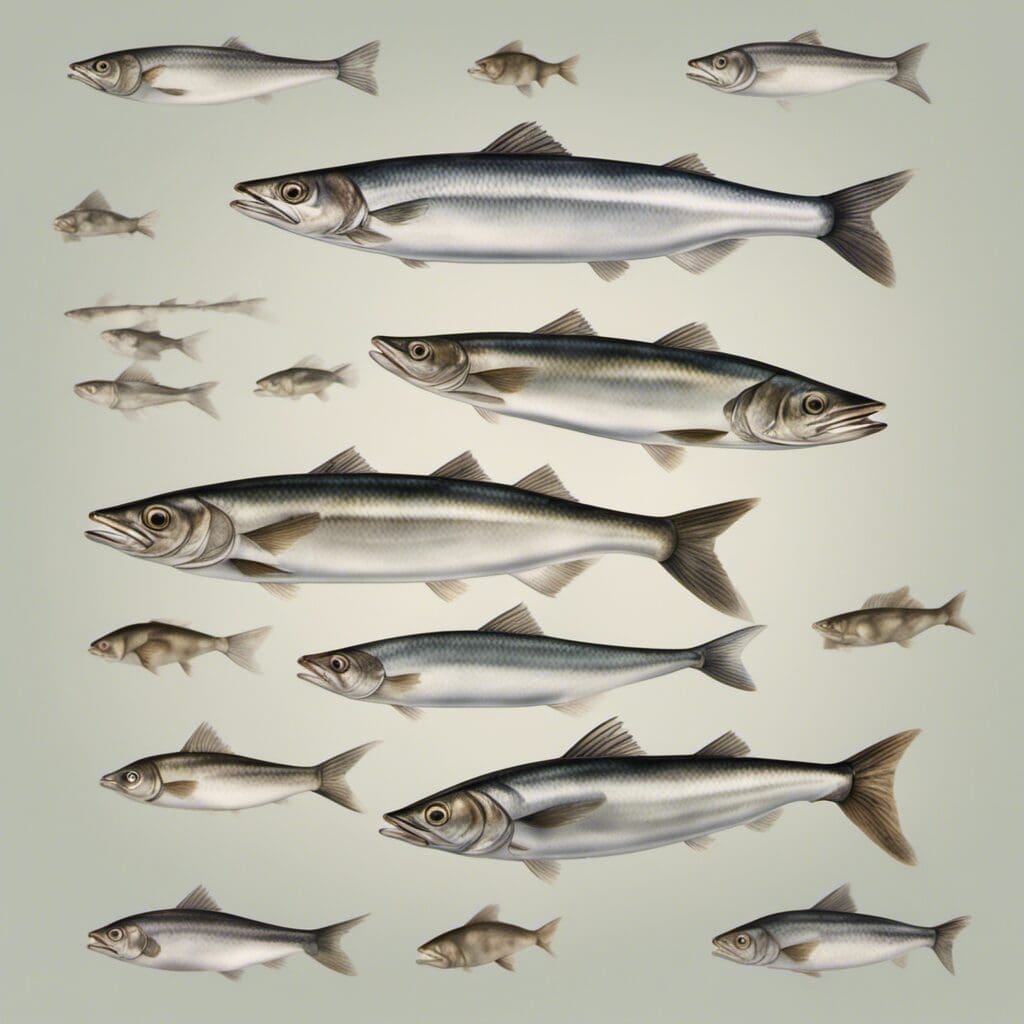Introduction
The Herring is a species of fish belonging to the Clupeidae family. Renowned for its silver-blue skin and streamlined form, this species plays a significant role in local economies and cuisines around the world.
Conservation Status
Currently, the Herring is classified as ‘Least Concern’ by the International Union for Conservation of Nature (IUCN), indicating a healthy and abundant population. The conservation efforts include careful management and monitoring of commercial fisheries to ensure sustainable practices.
Statistics
| Statistic | Average | Range |
|---|---|---|
| Length | 30 cm | 20 - 45 cm |
| Weight | 0.5 kg | 0.3 – 0.7 kg |
| Average Lifespan | 15 years | – |
Distribution
Herring are found in both North Atlantic and North Pacific oceans. They are known for their mass annual migrations from coastal waters to deeper open-ocean areas and vice versa.
Habitats
The Herring is a marine fish, preferring cooler temperatures within a range of 2°C to 14°C. They are found at a breadth of depths, from near the surface to several hundred meters deep.
When and Where to See
Herring are most easily observed during their annual spring and fall migrations into inshore waters. They are generally active throughout the day, peaking at dusk and dawn.
Best Fishing Locations and Tips
- Norwegian Sea
- North Sea
- Atlantic Ocean off the coast of New England
- North Pacific Ocean, particularly in the Bering Sea and Gulf of Alaska
- Baltic Sea
To find Herring, look for areas where food is abundant. They often travel in large groups, so if you find one, you’re likely to find more.
How to Catch
Fishing for Herring can be done using various techniques including net fishing, trawling, or simple rod-and-reel methods. Live or artificial baits are both effective, with small fish and squid being popular choices. The best fishing season is during their migration periods.
Identification Guide
Herring are notable for their silver-blue coloring, elongated body, and a singular dorsal fin. They can be distinguished from similar species by their hard, saw-like scales.
Culinary
Herring are famous for their rich, oily flesh that carries a distinctive flavor. They can be grilled or smoked to enhance their taste. Nutritional information shows herring to be a significant source of protein and Omega-3 fatty acids.
Additional Information
Herring are filter feeders, primarily consuming phytoplankton and zooplankton. Their natural predators include larger fish, marine mammals and birds. Herring have historical significance in numerous cultures, often as a signifier of prosperity and abundance.
References and Further Reading
For further information about Herring, the following resources might prove helpful:
- Fishes of the World by J.S. Nelson
- Ocean Life by F. C. Francis
- Marine Species Identification Portal

